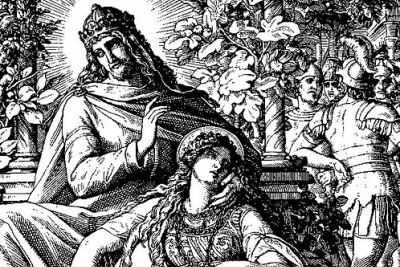
Six Reasons to Interpret Canticles Allegorically
The Canticles, or Song of Solomon, is often overlooked. Sometimes it is difficult to draw spiritual lessons from a book that focuses so much on apparently human love. Here are six reasons to view the book less as a description of human love and more as a portrayal of the divine love existing between Christ and the church. This does not deny that Canticles describes human love. Like many passages of Scripture, it describes a literal situation but also contains a universal divine meaning.
Reason #1 – Human love is only a picture of the grand archetype of divine love. Human love, like most everything on earth, is only a picture of a grander, greater theme. The apostle Paul described marriage in Ephesians 5:22-33, explaining that it is a picture of Christ and the church. Why would Canticles not teach the same thing in allegory?
Reason #2 – Canticles is most easily explained allegorically. Those who try to explain the Song literally run into many problems. Who is the bride? How many characters are speaking in the Song? What is the plot of the story? These questions are easily answered by the allegorical interpretation.
Reason #3 – The allegorical interpretation points to Jesus Christ. Jesus said, “You search the Scriptures, for in them you think you have eternal life; and these are they which testify of Me.” [1] According to the literal interpretation, Canticles testifies to the love of humans. According to the allegorical interpretation, Canticles testifies to the love of Christ.
Reason #4 – Similar passages are allegorical. The main theme of the Song is that of a bride and groom. The same idea is found in Psalm 45, Isaiah 54, John 3, Ephesians 5, Revelation 19, Revelation 21, and many other passages. While some of these passages may refer to human love, they all have a symbolical/allegorical reference to divine love. There is a precedent through Scripture to discuss divine love through the picture of human love and marriage.
Reason #5 – The allegorical interpretation is historical. Many Christians, from the early church to the present, believed that the Song is to be interpreted allegorically. Some of those who held to this opinion include Origen, Athanasius, Eusebius, Basil, Chrysostom, Ambrose, Augustine, Owen, Henry, Gill, Wesley, and McCheyne.
Reason #6 – Canticles follows a Near-Eastern allegorical genre. The literary tradition of the Near East includes similar poetry from Arabia, Persia, and India. These writings are similar in many ways to the Song, but are clearly figurative and allegorical.[2]
[1] John 5:39
[2] See George Burrowes’ A Commentary on the Song of Solomon, pp. 30-33




Maybe